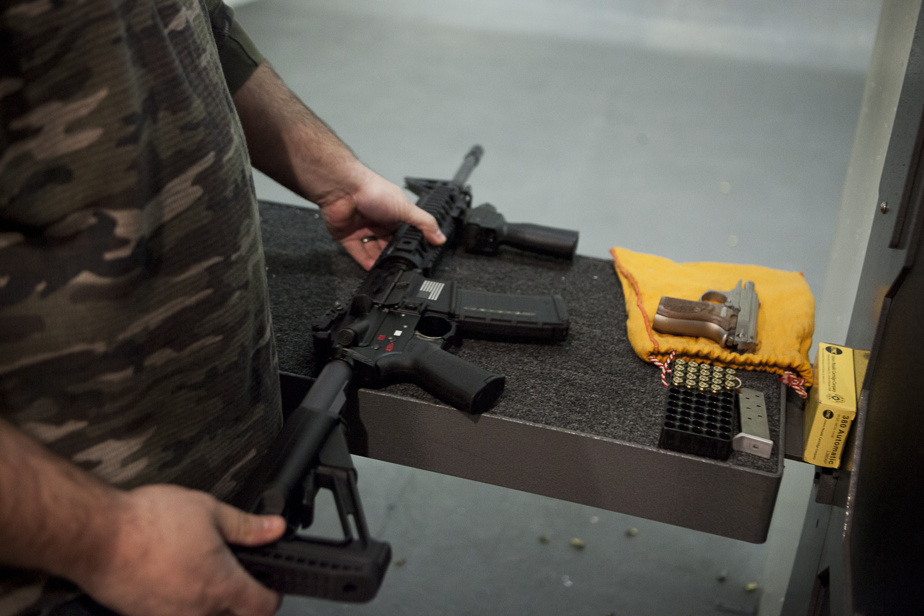(Ottawa) If it displeases PolySeSouvient, the new approach of the Trudeau government to ban assault weapons is welcomed by hunters. New amendments to Bill C-21 were passed in committee this week. They only target weapons that have not yet been marketed in Canada.
“I think we are on the right track,” reacted the president of the Quebec Federation of Hunters and Fishermen, Marc Renaud, in an interview. He was glad the government had not brought back the more than 300-page list that sparked controversy last fall.
“That there is no established list is good because at some point it becomes subjective, he said. There was a lot of judgment based on aesthetics. »
However, he laments that the use of firearms is still associated with “the violent side of people”. “We said it from the beginning, the weapon is one thing, but there are many other things that can cause damage. We only have to think of Quebec, when there was the person with his sword. »
Even if it welcomes the government’s retreat, the Canadian Coalition for Firearms Rights (CCFRA) is far from claiming victory. She leads a campaign for the withdrawal of Bill C-21 which includes a national handgun freeze.
“I think they should develop legislation or regulations that target the illegal use of firearms and not gun owners who have a legal license,” said spokeswoman Tracey Wilson.
“The misinformation came from the Liberal government,” Wilson said in an interview. They can blame us all they want, it was the government that withdrew its own amendments to replace them with this new, completely different version. »
The new definition of prohibited weapons that Public Safety Minister Marco Mendicino wants to include in the Criminal Code was incorporated into Bill C-21 on Thursday thanks to the support of the New Democratic Party and the Bloc Québécois.
It will encompass weapons “that are not handguns” that are both semi-automatic, “fire centerfire ammunition” and were “originally designed with a detachable magazine with a capacity of six rounds or more “.
The definition remains prospective, meaning that it will apply only to new weapons that enter the Canadian market and not to those that are already in circulation. About 2,000 assault weapons are already banned under a decree passed in 2020. PolySeSouvient wanted to add 482 models, which were included in previous amendments withdrawn by the government in February.
The minority Liberal government has made “a funny compromise”, according to Francis Langlois, professor at Cégep de Trois-Rivières and member of the Observatory on the United States of the Raoul-Dandurand Chair.
A definition of prohibited weapons and a list enshrined in legislation would have both removed existing assault weapons and prevented them from being marketed. The objective is to prevent them from being used to commit mass killings like that of the École Polytechnique in 1989. It would also have been more difficult for a possible Conservative government to eliminate the list when a decree can be modified by decision of the Cabinet.
This list could grow, which is opposed by the pro-arms lobby, which has challenged the current decree in Federal Court. Minister Mendicino announced his intention to reinstate the Canadian Firearms Advisory Committee to review their classification. The Federation has asked to be part of it. Some weapons that are considered military-style assault weapons are also used for hunting, such as the SKS.
This type of weapon has also been used several times to kill police officers in recent years. The Federation of Municipal Police Officers of Quebec lists five in a letter sent to Minister Mendicino last week.
Bloc Québécois MP Kristina Michaud is calling for the advisory committee to be formed as quickly as possible so that it can issue its recommendations before August. She also asks Minister Mendicino to confirm his intention to ban the military-style assault weapons still in circulation by decree.
There is at least one point on which everyone agrees, including the pro-weapons lobby, namely the addition of ghost weapons to the definition of prohibited weapons in the Criminal Code, which are manufactured illegally using 3D printers .

